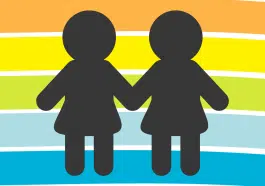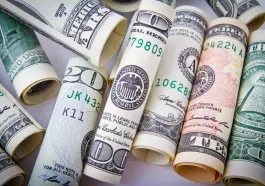LGBTQ+ Facts
Brussels, Belgium, is an incredibly welcoming and inclusive city for LGBTQ+ people. The Brussels tourist office has various pages on its website for queer visitors to their municipality, including an interactive map.
Another resource in Brussels is The Rainbow House, a café and information center for anyone wanting to learn more about sexuality and gender. It is also a popular hangout for various LGBTQ+ organizations in Brussels.
Here are some of the most popular LGBTQ+ events in Brussels:
- Belgian Pride: This event takes place every May, with various activities and events.
- Brussels hosts several LGBTQ+ film festivals.
- The Gay & Lesbian Festival of Belgium (FR/NL): This event happens every January/February.
- The Massimadi LGBT film festival of African origin: This event occurs in May.
- Pink Screens: This festival takes place in the fall.
- In the fall, lesbians join together to celebrate L-week.
- One excellent way to meet other LGBTQ+ folks, get some physical activity, and have fun is by joining an LGBTQ+ sports club.
Mental Health in Brussels, Belgium
In 2018, approximately one in ten individuals in Belgium experienced a depressive disorder and/or an anxiety disorder. However, when it comes to the well-being of children, Belgium overall placed eighth for best countries to bring up children, as reported by Unicef.
If you are searching for a mental health care provider specializing in treating young people, navigate our listings at LGBTQ and ALL.
Top Features
The City of Brussels is the largest municipality and historical center of the Brussels-Capital Region and Belgium’s capital. It is also the administrative center of the European Union and is thus often dubbed, along with the region, the EU’s capital city.
Belgium is known for its beers, and you can find the famous Cantillon Brewery, a small traditional family brewery in Anderlecht, Brussels.
Top attractions include:
- Grand Place (Grote Markt)
- Mannekin Pis
- Saint-Michel Cathedral
- Belgian Comic Strip Center
- Place Royale
- Belgian Royal Museum of Fine Arts
- Atomium
- Coudenberg Palace Archaeological Site
- Mont des Arts
- Notre-Dame du Sablon
- Parc du Cinquantenaire
- Château Royal
- Basilique Nationale du Sacré Coeur
- Abbaye de la Cambre
Facts
- Brussels International Airport has the world’s most significant chocolate-selling point.
- This city contains 138 restaurants per square mile.
- The Galeries Royales Saint-Hubert is one of the oldest shopping arcades in Europe.
- Brussels has the second deepest swimming pool globally, called Nemo 33.
- There are two varieties of Belgian waffles, including a Brussels Waffle and the Liege Waffle. The Brussels Waffle has right-angled corners and is larger than the other waffles. It is also crunchy and airier, and lighter on the inside.
History/Data
Even though the area was inhabited, dating back to prehistoric times, the oldest reference to Brussels is from the 10th century. During that time, it was given the Frankish name Bruocsella, translating to “settlement in the marshes, and it was part of Lower Lotharingia or Lower Lorraine. This area then later became referred to as the duchy of Brabant.
Brussels development occurred because of its location on the Senne River, which flows in the direction from the south to the north, and provided an east-west economic route with towns on the Rhine like Cologne (which is now found in Germany), Brugge (Bruges), Ieper (Ypres), and other towns in the Flanders region.
When the road and river crossed, a market and bartering place emerged under the protection of the dukes of Brabant. By the time the 12th century came, Brussels had featured many defensive ramparts with towers and fortified gateways.
In 2011, the population of Brussels was 174,383 residents.






